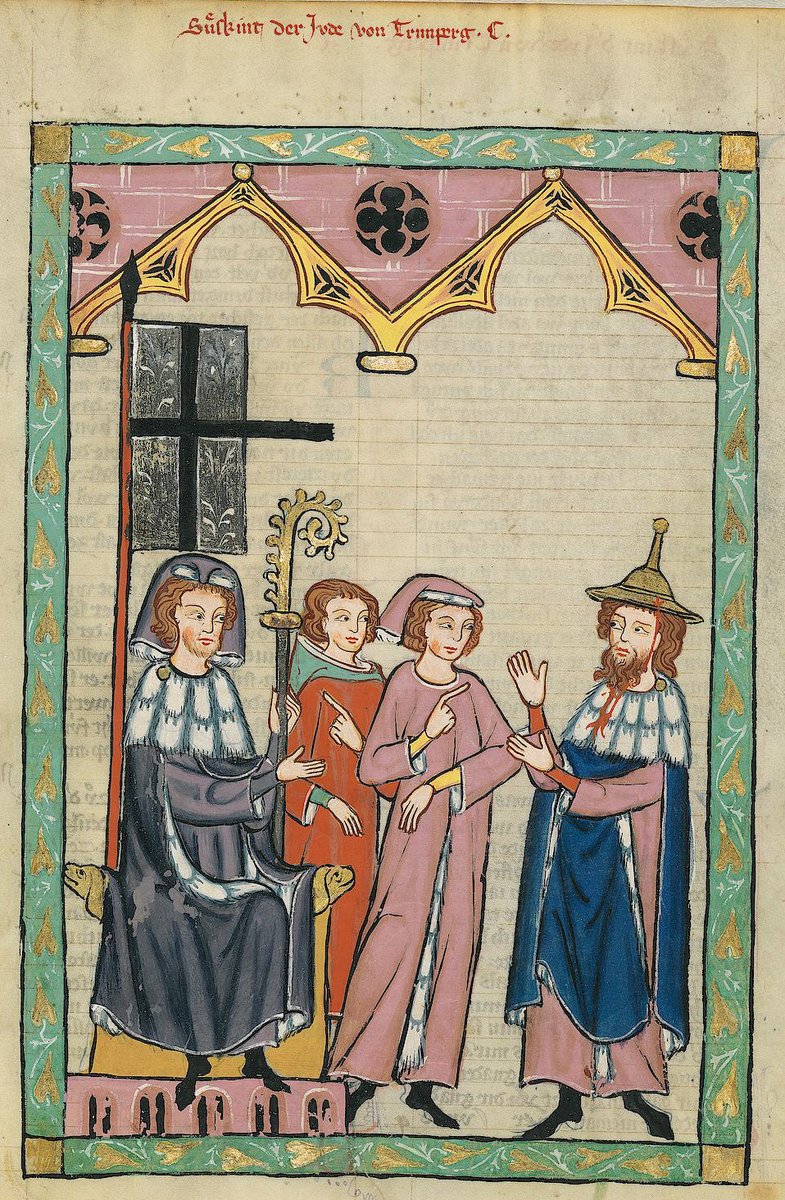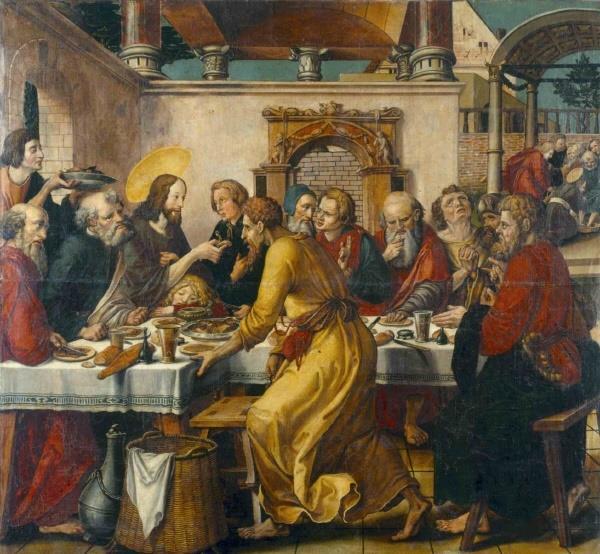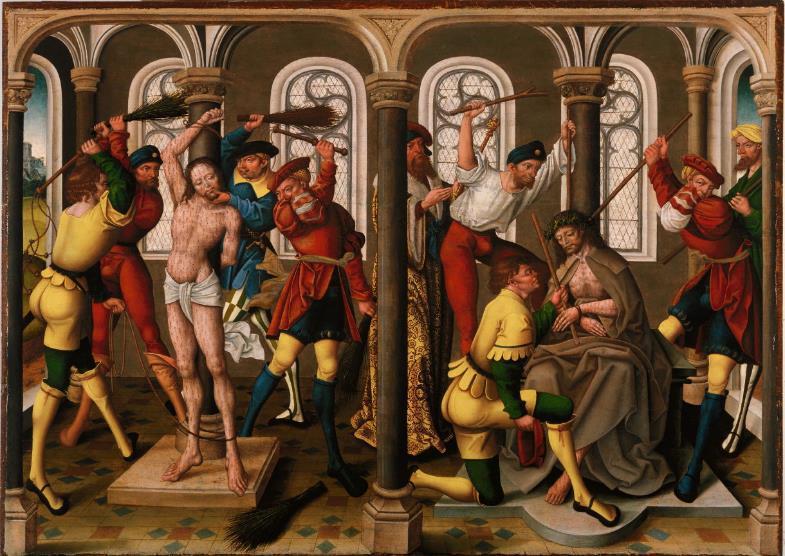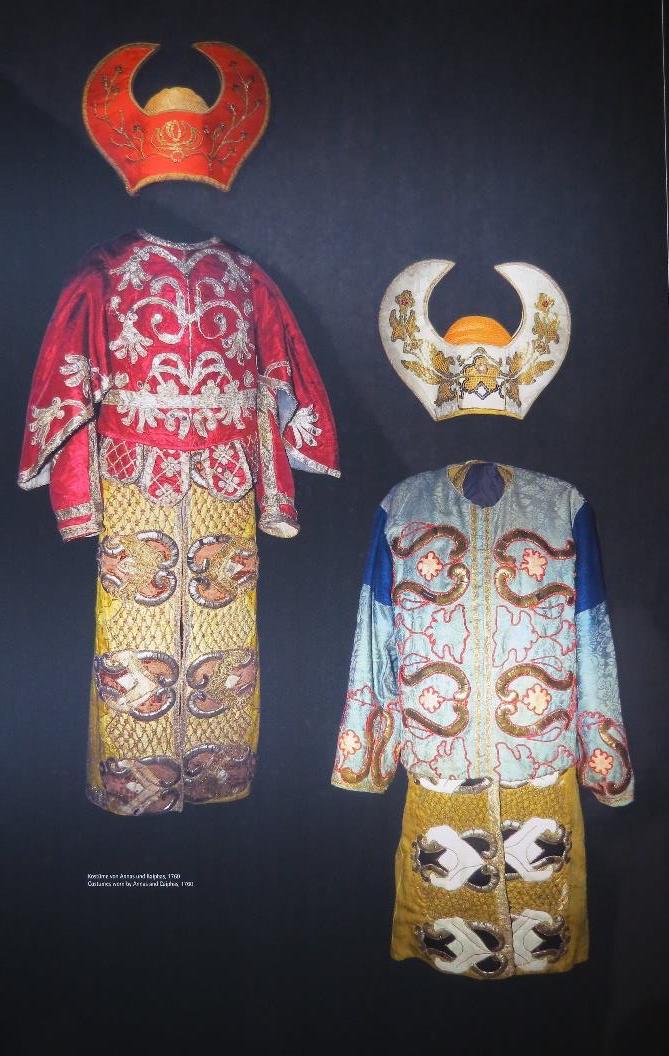Jewish communities have been forced to wear badges and other special articles of dress from the 13th century thru to Nazi Germany (No, the Nazis didn& #39;t & #39;invent& #39; the yellow badge...far from it).
But why YELLOW??
Let& #39;s find out... 1/ https://twitter.com/DrKatieTurner/status/1283012150483705856">https://twitter.com/DrKatieTu...
But why YELLOW??
Let& #39;s find out... 1/ https://twitter.com/DrKatieTurner/status/1283012150483705856">https://twitter.com/DrKatieTu...
In Antiquity, yellow was a feminine colour, worn by Greek & Roman brides on their wedding day (Pliny, NH 21.46). Consequently, Cicero and Juvenal both implore men to avoid it. It is hard to know what the word & #39;yellow& #39; meant in an ancient context however. 2/
@LloydLlewJ suggests a reddish hue (from saffron), but an attempt to determine the exact shade is likely futile. Yellow stripes can be seen in an early 2nd c. wool spread (poss. a scroll wrapper) from Israel. But whether this would& #39;ve been referred to as & #39;yellow& #39;... https://abs.twimg.com/emoji/v2/... draggable="false" alt="🤷♀️" title="Achselzuckende Frau" aria-label="Emoji: Achselzuckende Frau"> 3/
https://abs.twimg.com/emoji/v2/... draggable="false" alt="🤷♀️" title="Achselzuckende Frau" aria-label="Emoji: Achselzuckende Frau"> 3/
Issues of translation / historic understanding follow us into the medieval era, when yellow becomes a derogatory colour. And yet, in the Church, yellow vestments could sub for green ones on ordinary days, and non-festival Sundays. These must have been different yellows. 4/
Motivated by fear of prohibited sexual relations btwn Xtians and heretics, Canon 68 of the 12th Lateran Council stipulated that Jews and & #39;Saracens& #39; (a pejorative for Muslims) should & #39;at all times& #39; be marked off from the public & #39;through the character of their dress& #39;. 5/
Tho Canon 68 did not specify *how*, the intention was clearly for easy identification. Corresponding secular laws mandating special clothing items show a preference for yellow or red. Perhaps, because these are bold, bright, conspicuous colours. 6/
A circular, yellow badge was most common. Barbara Wisch suggests the colour and the shape may have been intended to represent a coin, & #39;stigmatizing Jews as accomplices of Judas& #39;. Or, the Eucharistic wafer, and thus reminding Xtians of supposed Jewish desecration of the Host. 7/
Yellow *may* have come from a 7th or 8th C Islamic caliphate. & #39;Unbelievers& #39; were marked by a patch on their shoulder: yellow for Jews, blue for Xtians, black for magi. The specifics, incld. whether Western rulers were even aware of it, however, are hugely contested. 8/
Yellow wasn& #39;t limited to badges. In N. Italy, Jewish women wore yellow veils. In Recanati (c. 1499), yellow hats for men and yellow headband for women. In much of the German-speaking region, yellow, pointed hats (Judenhut) were preferred. 9/
Yellow wasn& #39;t limited to Jews either. It marked many Xtian & #39;undesirables& #39;. In 15th C Spain, penitent heretics (Jews included) wore a garment with a large yellow cross. Prostitutes in Pisa, Bologna, Venice, Vienna, and Seville wore yellow headbands / scarves. 10/
In Bergamo & Leipzig, yellow cloaks. Punishment for violating these laws ranged from hefty fines, to whipping, to forced, public stripping. Thru its derogatory use, yellow came to represent heresy, usury, immorality, and prostitution (along w/ red). 11/
Yellow clothing was frequently used in representations of Cain, Synagoga (a personification of Judaism), the tormentors of Christ, and, of course, Judas. In medieval Xtian drama, the Romans often carried a yellow standard with a black scorpion. 12/
These 18th century costumes from the Oberammergau Passionsspiel, utilized this, now well-established colour combination of yellow and red. (They also show an amazing Orientalism that is a topic for another post):
13/
13/
Xtian art & drama perpetuated and reinforced yellow& #39;s negative connotations and its association w/ Jews/Judaism. Persecutory yellow badges for Jews were mandated thru the end of the 18th C in Rome, France, and under the Austrian crown. 14/

 Read on Twitter
Read on Twitter 3/" title=" @LloydLlewJ suggests a reddish hue (from saffron), but an attempt to determine the exact shade is likely futile. Yellow stripes can be seen in an early 2nd c. wool spread (poss. a scroll wrapper) from Israel. But whether this would& #39;ve been referred to as & #39;yellow& #39;...https://abs.twimg.com/emoji/v2/... draggable="false" alt="🤷♀️" title="Achselzuckende Frau" aria-label="Emoji: Achselzuckende Frau"> 3/" class="img-responsive" style="max-width:100%;"/>
3/" title=" @LloydLlewJ suggests a reddish hue (from saffron), but an attempt to determine the exact shade is likely futile. Yellow stripes can be seen in an early 2nd c. wool spread (poss. a scroll wrapper) from Israel. But whether this would& #39;ve been referred to as & #39;yellow& #39;...https://abs.twimg.com/emoji/v2/... draggable="false" alt="🤷♀️" title="Achselzuckende Frau" aria-label="Emoji: Achselzuckende Frau"> 3/" class="img-responsive" style="max-width:100%;"/>







